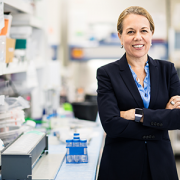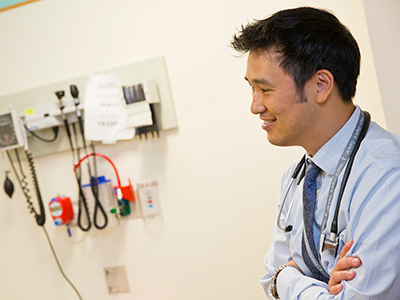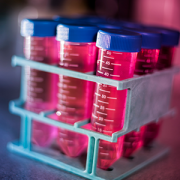
Catherine Bollard, M.D., MBChB, Chief of the Division of Allergy and Immunology, recently shared her expertise on an FDA panel that unanimously expressed its support for a pediatric cancer T-cell therapy called CTL019.
On July 12, 2017, a U.S. Food and Drug Administration advisory committee unanimously expressed its support for CTL019 – a pediatric cancer T-cell therapy. If the FDA follows the advice from the 10-member Oncologic Drug Advisory Committee (ODAC) – which included Children’s National Health System’s Catherine Bollard, M.D., MBChB, Chief of the Division of Allergy and Immunology and Director of the Program for Cell Enhancement and Technologies for Immunotherapy – CTL019 will become the first gene therapy to hit the market.
“Many of these children with recurrent cancer are out of other options to treat their illness,” said Dr. Bollard. “We are encouraged by these findings and the potential for this therapy to improve outcomes and quality of life.”
CTL019 is a chimeric antigen receptor (CAR) T-cell therapy, comprised of genetically modified T cells that target CD19, an antigen expressed on the surface of B cells. Also known as tisagenlecleucel, the therapy targets a single type of cancer called acute lymphoblastic leukemia and was created by Novartis.
In clinical trials, CTL019 showed unparalleled effectiveness. Of the 68 patients who received the drug, 52 responded almost immediately, and their cancer disappeared within the first three months. Seventy-five percent of those patients remained cancer-free six months after treatment. The therapy has one main side effect: an immune reaction called cytokine release syndrome, which can be deadly, with extended spiking fevers and other symptoms.
However, because of CTL019’s high efficacy, FDA scientists asked the ODAC panel to focus on the therapy’s safety and manufacturing challenges rather than whether or not it works.
Several committee members, including Dr. Bollard, expressed apprehension about the T-cell subpopulations’ heterogeneity, which could affect safety and efficacy. Another issue for consideration by the ODAC panel was the long-term side effects of CTL019 and the possibility that the T-cell modification could go awry, causing secondary cancers in the future.
Despite these concerns, the committee concluded that the strong efficacy data and the near-term benefits of CAR-T therapy more than tipped the scales in favor of the therapy. ODAC members were also pleased with Novartis’ plan to minimize risk, which includes limiting CTL019 distribution to selected centers with CAR T-cell therapy experience, and extensive, long-term post-marketing surveillance plans.
The FDA is not required to follow the ODAC panel’s advice when making its final decision, but it often does so. A final decision by the FDA is anticipated by late September.
Read more about the story in the Philadelphia Inquirer, Medpage Today and Healio.com.










